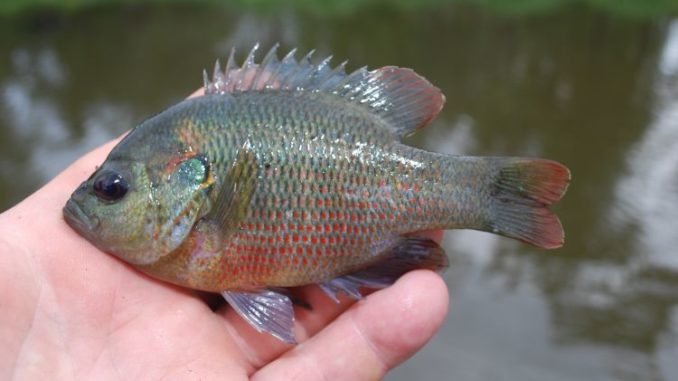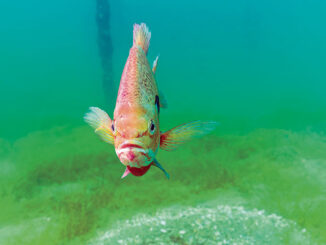
Louisiana has a bunch of bream (if you are one who doesn’t consider “bream” to mean only bluegill) species. Most people can identify bluegills, goggle-eyes, and chinquapins, but the rest of them are often just lumped together with a shrug.
One of the neatest ones is the stumpknocker or redspotted sunfish, as it is properly known. Its Latin name Lepomis punctatus also points out its predominating feature. Punctatus means spotted.
Each scale on the lower halves of their bodies has a noticeable spot, bright red in males and olive-orange in females. Their spots give males an overall brick-red color and females a greenish-red color.
At first glance, especially viewed from the side, these sunfish appear to be too small to keep. But they often pack as much meat on their bodies as do big hand-sized bluegills, especially big males that become skinny as wedges after guarding their spawning beds all summer.
Redspotted sunfish are thick — broad across the back.
They are also spunky fighters and willing to take topwater lures. Like bluegills, they keep an eye on the water’s surface and will quickly nab any insect that falls on it. Fly fishermen get a lot of sport from them.
So do cricket and worm fishermen. They occur in many natural waters (vs. man-made ponds), but are especially common in Louisiana’s swamp waters. They like sluggish or still waters and do well on soft, silty bottoms.
Unlike bluegills and chiquapins, redspotted sunfish don’t nest in colonies (often called beds). Rather their nests are solitary or in company with one or two other nests. So typically, fishermen catch one here and one there.
Like any other bream species, they are white-fleshed, mild, and delicious. They may be scaled and fried, fins and all, but surprisingly, because of their body thickness, they are easy to fillet and produce a nice nugget of meat.

